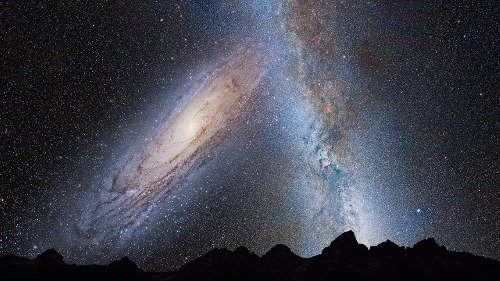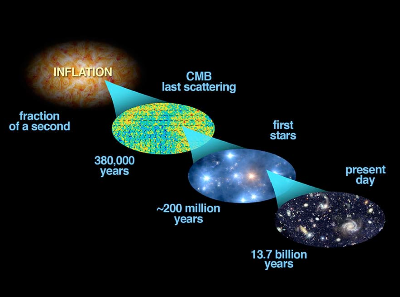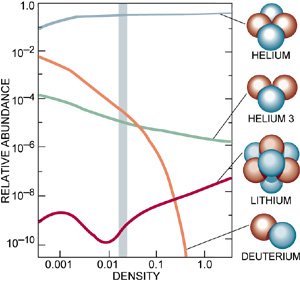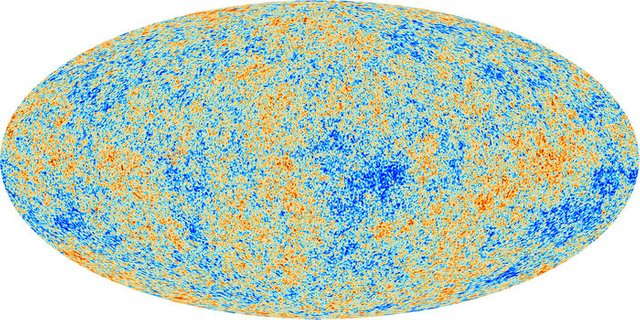Standard cosmology (in a nutshell)
Very recently, it has been shown that the Universe has no preferred direction. No matter how we observe it, it looks always the same. This is the conclusion of a scientific article that has been published in Physical Review Letters last week, and that is available from the arXiv as well.
The study performed in this article is a first and strong test on a basis assumption of standard cosmology, which is actually my main motivation for writing this post about modern cosmology.
 [image credits: Pixabay ]
[image credits: Pixabay ]
THE INFLATION EPOCH
The standard model of cosmology, also known as the Lambda Cold Dark Matter (or Lambda-CDM) model, is the currently adopted paradigm to explain many phenomena occurring in the Universe. This model is based on the Big Bang hypothesis that states that our Universe began more or less 13 billion years ago.
The first 0.000….01 second (there are 31-32 zeros) of the Universe life is a period called the inflation epoch. It is a very short period of time (a tiny fraction of a second) in which the Universe has exponentially expanded. Actually, the expansion of the Universe has not stopped after the inflation period, but it has instead continued at a way slower pace (until today included).
The idea is that the entire Universe was causally connected at some point in its history (the inflation epoch) and then expanded very rapidly by a factor of about 1000000…000 (with more 26 zeros). It is the same thing as inflating a balloon, if one wants to make it more visual. The balloon is expanding so that two points on its surface are more and more distant with time.
The usual assumption is that the Universe is homogeneous and isotropic, or equivalently that any two points on the balloon always evolve in the same way. In other words, this means that our Universe looks the same in every direction we look at it, and from every point on it. On a largely-enough scale of course.
Quantum fluctuations have however entered into the game, and are responsible for small deviations that appear here and there. This is what has given rise to the formation of the structures like the galaxies way later.
Why do we need the inflation, how has it practically happened and is it the only option for explaining what we see today? We actually do not know. But this mechanism explains many observations, which is why it is widely accepted by the scientific community.
THE COSMIC SOUP - BARYOGENESIS
 [image credits: arXiv:astro-ph/0604101 ]
[image credits: arXiv:astro-ph/0604101 ]
Right after inflation, the early Universe looks like a cosmic soup of matter and energy. Particles are constantly created from the vacuum, or more precisely pairs of particle/antiparticle. In addition, particles and antiparticles also annihilate into energy. We have here a thermal equilibrium.
However, the Universe is continuing expanding and cooling down. And when the temperature decreases, some important thresholds are crossed. At each of these important threshold in temperature, a given particle-antiparticle production process becomes forbidden, so that the corresponding particles/antiparticles can only annihilate. Very few of them are at the end of the day left behind.
However, for every 30.000.000 antiquarks, there were 30.000.001 quarks. This super-tiny matter-antimatter asymmetry results from what is known as baryogenesis. Why is it like this? Why is the Universe matter-dominated. We do not know. But one thing is certain: antimatter is not abundant in the Universe today and this is a consequence of this asymmetry.
After baryogenesis, the Universe turns out to be full of protons and neutrons.
BIG BANG NUCLEOSYNTHESIS
 [image credits: Martin White ]
[image credits: Martin White ]
Within the ten first minutes of the Universe, the latter was hotter than the interior of the stars so that atomic nuclei could be formed. Protons and neutrons are combined to form several species of light nuclei like deuterium, helium or lithium. This is called the Big Bang nucleosynthesis.
The amount of each species (see the intersection of the gray band on the figure above with the colored lines) that has been created depends on initial conditions such as the relative abundance of dark matter, neutrinos and all non-baryonic particles with respect to the abundance of baryonic particles (protons and neutrons). From the today’s measured abundance of the light elements, we know that the amount of dark matter is much larger than the one of baryonic matter.
THE RECOMBINATION ERA
After a few of hundreds of thousands of years of cooling down and expanding, the Universe becomes cool enough so that atomic nuclei and electrons can be combined into atoms.
Before that time, electrons and ionized nuclei (with a positive electric charge) are lying around everywhere in the Universe. This ionized gas was mainly uniform, with slight deviations. Photons are scattered around within this gas in all possible directions. They could indeed not really go straight on a long distance as they would rapidly hit a charged particle making them changing direction. The Universe is at that time called opaque.
When the temperature reaches a few thousands of Kelvin, atoms are formed and the resulting matter becomes neutral. Photons can now travel long distances through the Universe without interacting with any electrically-charged body. The Universe is became transparent.
The light (or the photons) released at the time of the recombination is still visible today. This is what is called the cosmic microwave background. Although these photons are initially ultraviolet and visible, the expansion of the Universe shifted their frequency into the microwave regime. This is what Penzias and Wilson have observed in the sixties.
 [image credits: ESA ]
[image credits: ESA ]
On the above picture, we can see the cosmic microwave background as observed by the Planck satellite. The deviations in the ionized gas above-mentioned give rise to the observed structure, and the investigation of this map has allowed physicists to extract a lot of information on the Universe, its composition and its evolution.
The recombination era is also the moment where dark matter has started to combine itself into halos. Those halos serve as sites for the formation of the galaxies.
Gravity is here at work and plays a key role. Dark matter attracts baryonic (or visible) matter, that then falls in the center of the halos, forming groups of stars which by burning their fuel explode and release heavier elements. Later on in the Universe life, these small protogalaxies interact and merge into larger structures, the galaxies as we know them.
AND OUR RESEARCH ARTICLE?
It is now time to go back to the research article I mentioned in the beginning of this post.
The Lambda CDM model assumes that the Universe is both isotropic and homogeneous. This hypothesis has been recently tested by British researchers: they have found that there is only one chance out of 121.000 that the Universe has a preferred direction.
Maps of the cosmic microwave background such as the one shown above have been scrutinized for patterns that would hint towards another hypothesis. Nothing has actually been found at a very good confidence level.
Standard cosmology is thus safe! As a particle physicist, I am mostly connected to the dark matter part of cosmology, and how to detect it. This will be the topic of one of my next posts.
SOURCES
- How isotropic is the Universe, also available from the arXiv.
- For more (popular) information: a press release from Imperial college.
- For the rest, any textbook :)
Truly excellent post. Thank you so much for writing this. I enjoyed reading this a great deal and I learned a lot from it. Keep up the great work, and good luck with your research at the LHC.
Very interesting, looking forward to the dark matter post!
Nice job with this @Lemouth you have explained this all very clearly.